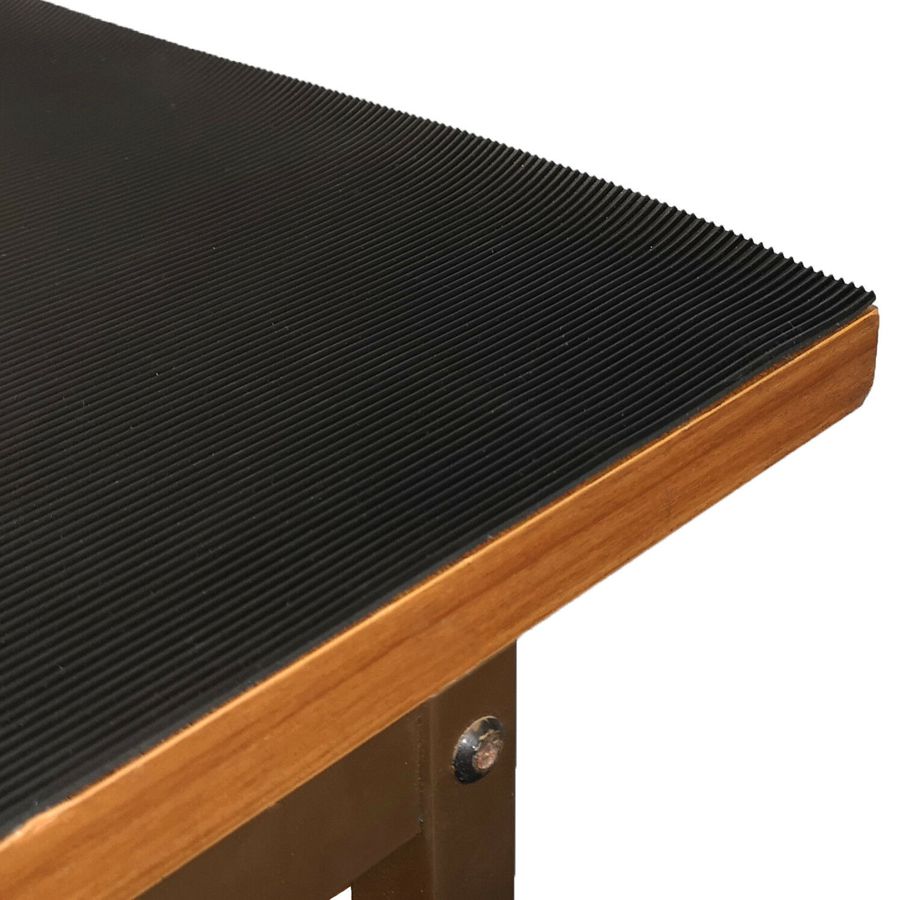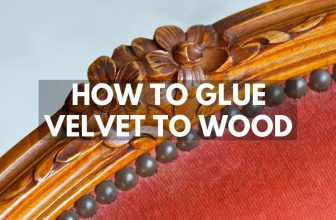
How To Glue Rubber To Wood
The key to fixing rubber to wood without it peeling off is to choose the right type of glue before you start. Contact cement, super glue, and polyurethane glues have all worked well for us in the past however we mainly use one type so keep reading to find out what it is.
Many common adhesives will not work on both rubber and wood together and you often end up with a very weak bond. Wood is an easy surface to bond to but rubber is a little tricker. That is why we use contact cement like Dap Weldwood Contact Cement so that the rubber doesn’t peel off under its own weight.
There are some things we can do to prepare the surfaces for a better bond as well as steps you can take to ensure a strong bond. This article will discuss the entire process of gluing wood to rubber, the materials needed, and the steps to follow. you can also check out our article on gluing rubber to concrete which might also be relevant to your project.
Which Glue to Use?
The glue type depends on the kind and size of the materials to be glued together. However, if you have no idea where to start, you can use general adhesives used for most types of rubber. This said, here are three adhesives you can use to bind glue rubber to wood.
Contact Cement Glue
Contact cement is the best adhesive for non-porous material that other adhesives can’t glue. This is commonly used for professional adhesive works because of its bonding strength. It takes about 30-70 minutes for each surface to become tacky before you stick them together. Clamping the two materials together is advised for a tighter bond.
A solvent is used before application to prepare the surfaces, which later evaporates after the wood and rubber are bonded. If you want a long-lasting fix of rubber to wood then this is what we would recommend.
Polyurethane Glue
Polyurethane glue stands out because it forms a very firm bonding between rubber and wood. Other properties that make it convenient include high resistance to weathering, environmental influences, and aging, good bonding properties in large bonding surfaces, and ease of use. Examples include gorilla polyurethane glue and polyurethane construction adhesive and sealant.
Superglue
Adhesives under this category are favorable when using wood and any other material. The glue dries within seconds and does not require clamping to set. It’s best for seamless projects as it dries clear and quickly. It’s designed with precise application and you’ll apply to only the actual point without leaving other parts messy. The best super glue to bind wood and rubber is Loctite super glue ultra-gel because it bonds to rubber better than standard cyanoacrylate.
How to glue wood to rubber
Preparation
Surface preparation is very critical to ensure good adhesion is achieved. Both surfaces are prepared before the adhesive is applied. This is done as follows:
For Rubber
The first step is degreasing – This is done using a volatile solvent such as acetone to remove debris, oil, grease, tar, and other loose contaminants from the surface.
The second step is abrasion – Which is done to remove plasticizers and other materials from the surface of the rubber. After this exercise, exposed rubber is left and this ensures good adhesion is achieved. Degreasing is also done after this step to remove debris created during abrasion.
The last step is chemical treatment- It’s necessary to ensure the surface is activated both physically and chemically so that it’s ready for bonding. Chemicals used include acids and alkalis such as sulfuric acid, hydrochloric acid, and trichloroethylene solvent.
For Wood
The essential preparation done on wood is leveling and sealing. The wood is leveled to smoothen it so that it bonds well when the adhesive is applied without some parts being left out. Porous wood is sealed to prevent the wood from soaking glue once it’s applied. Different sealants are used, such as sanding sealer or silicone sealant.
Applying the Glue
Apply glue on the prepared surfaces of both rubber and wood. Dip a brush in the glue to get enough of it, then apply first on rubber and then on wood and stick the two together. You can also use a needle tip to apply glue to both rubber and wood and finally stick them together.
Setting the Glue
Keep the wood and rubber stuck together for proper bonding using a clamp or tape. Different adhesives take different durations to dry, ranging from seconds to hours. For glues that take a long time to dry, you can use activators to accelerate their curing time.
Conclusion
Hopefully, you now know what to do when you need to glue wood to rubber. The techniques are pretty simple and straightforward as all you need is the adhesive, materials to be glued together, and some basic working tools such as gloves and a brush. Precision is required when preparing the surfaces and during glue application for good adhesion to be achieved.
Thanks for visiting Glue Lab!









